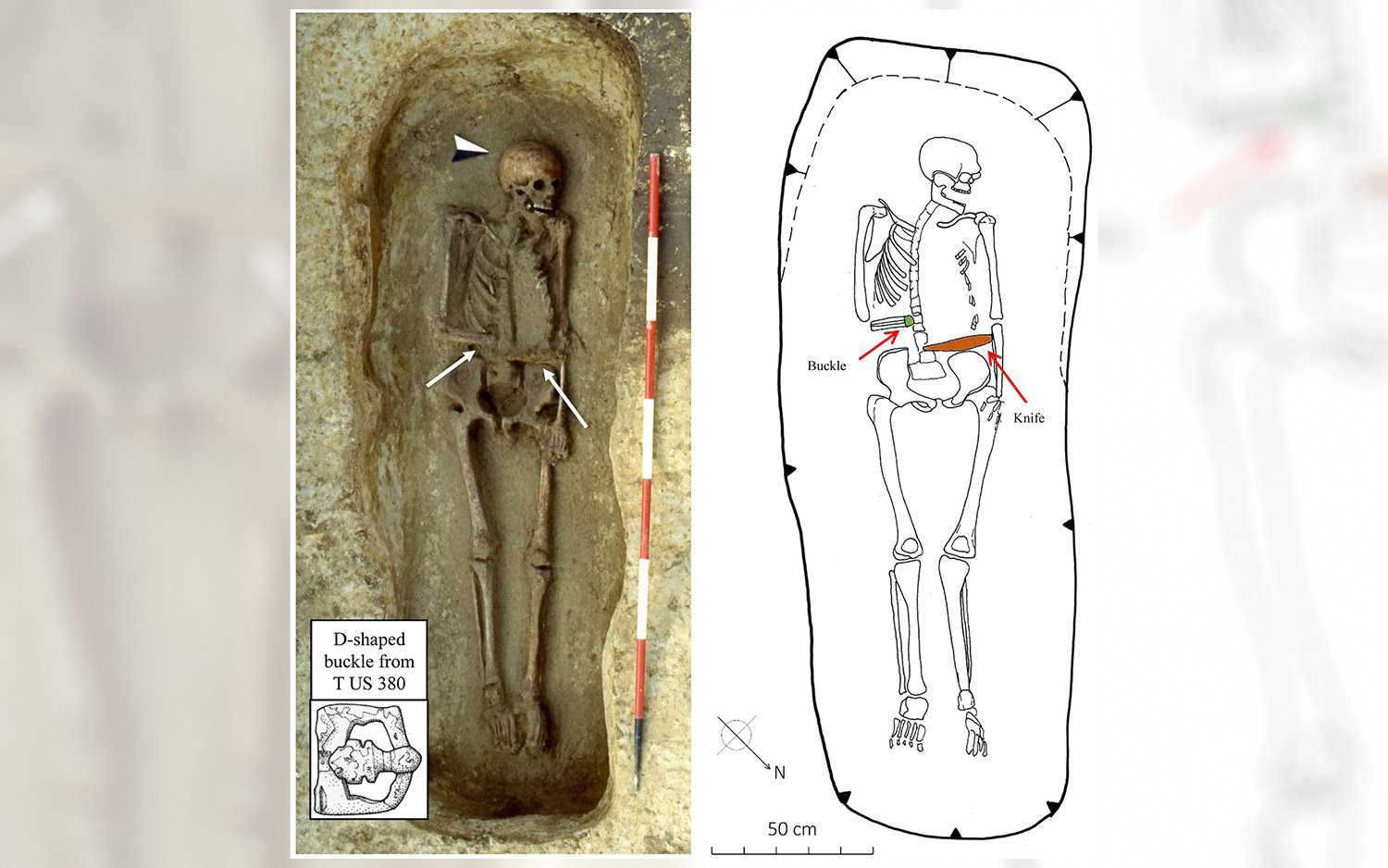Knife-Armed Man Leaves World's Coolest Skeleton

Fifteen-hundred years ago, a single mighty blow crashed down upon a man in Italy, severing his right hand. The wound should have killed him — if not from immediate blood loss, then from an infection for which there were no antibiotics. But he survived.
The man's severed bones healed. He lived for many years, possibly even decades longer, until he was nearly 50. Eventually, he replaced his missing hand with a long knife buckled to his arm with leather straps. Today, his body lies in a necropolis in northern Italy, surrounded by more than 200 fellow Italian skeletons and one headless horse interred as an animal offering. [The 5 Strangest Prosthetic Limbs]
Does this story fill you with a warm, fuzzy feeling?
Maybe it should, said the anthropologists who documented the unusual skeleton's discovery in the newest issue of the Journal of Anthropological Sciences. Grim details aside, the blade-armed man lost his hand during a time when an amputation could be a death sentence. His survival well into middle age represents not just a personal triumph, the researchers wrote, but also a human one.
"This [find] shows a remarkable survival after a forelimb amputation during pre-antibiotic era," the team, led by researchers from the University of Rome, wrote. "The survival of this [man] testifies to community care, family compassion and a high value given to human life."
Body and blade
The man's skeleton was exhumed about 20 years ago from the Longobard necropolis of Povegliano Veronese near Verona in northern Italy. The site, which dates roughly to between the sixth and eighth centuries A.D., has so far yielded 164 tombs holding 222 individuals (plus a burial pit containing two greyhound dogs and the aforementioned horse).
Researchers discovered the blade-handed skeleton alone in a tomb, with its right arm bent at the elbow and draped over the chest. This alone was unusual enough to get researchers' attention; while various other men in the necropolis had been buried with weapons, their arms all hung straight down at their sides. Further analysis revealed that the man's right hand was missing, that it had been amputated from his forearm by a single blow and that the bones in his arm had ample time to heal before he died (which was likely sometime in his late 40s).
Sign up for the Live Science daily newsletter now
Get the world’s most fascinating discoveries delivered straight to your inbox.
In the spot where the man's right hand should be, researchers found a prosthetic limb fashioned from leather straps, a bronze buckle and a long, iron knife, which the team dated to the end of the 6th century. Dental analysis showed that one of the man's upper incisors was worn down significantly compared to surrounding teeth, suggesting he had used that tooth for something other than chewing — perhaps for tightening the straps on his prosthetic, the researchers said.
How the man lost his hand is another mystery. One big clue: that he even survived a limb amputation before antibiotics existed.
"This highlights a community-level effort to provide an ideal setting for healing to take place," the researchers wrote. "This suggests a clean environment and intensive care during the early stages of healing, with the ability to prevent death from blood loss."
Based on these findings, the researchers said, it's likely the man lost his hand in the line of battle or during a medical procedure. If his hand had been lopped off as punishment, he probably wouldn't have received such effective medical care, they said. Their full report is available on the Journal of Anthropological Sciences website.
Originally published on Live Science.

Brandon is the space/physics editor at Live Science. His writing has appeared in The Washington Post, Reader's Digest, CBS.com, the Richard Dawkins Foundation website and other outlets. He holds a bachelor's degree in creative writing from the University of Arizona, with minors in journalism and media arts. He enjoys writing most about space, geoscience and the mysteries of the universe.










